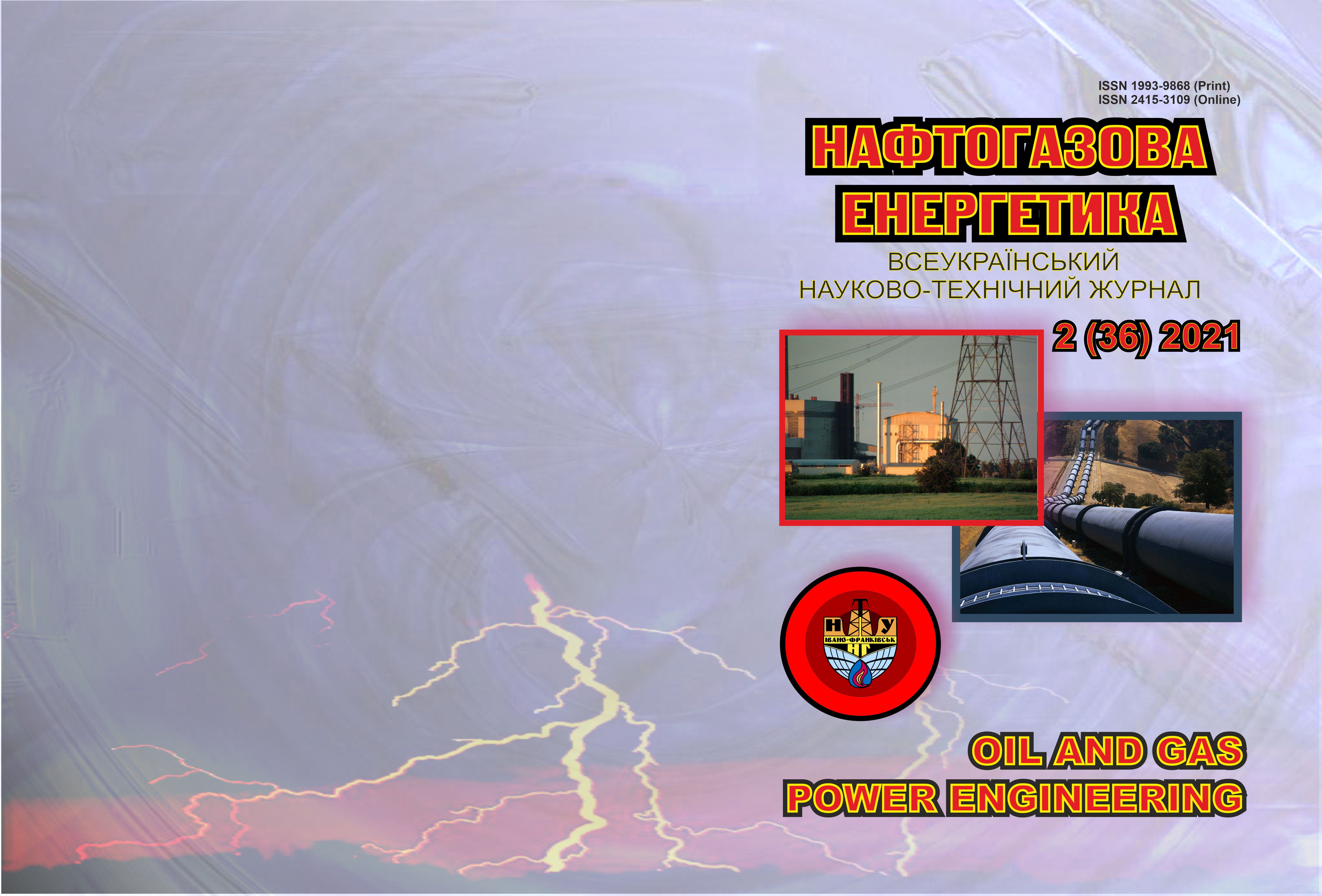Technologies for capturing carbon dioxide and prospects of its utilization in depleted oil and gas fields
DOI:
https://doi.org/10.31471/1993-9868-2021-2(36)-31-41Keywords:
air pollution, climate change, technologies, carbon dioxide capture, decarbonization, production modernization, oil and gas fields, waste disposal of carbon dioxide, increased hydrocarbon recovery.Abstract
The problem of global warming and climate change requires global efforts to reduce the negative impact on the atmosphere. Capturing carbon dioxide is a key strategy in achieving pollution reduction targets. Reducing air pollution can be achieved by reducing the share of fossil fuels in the energy balance, introducing technologies for generating electricity from renewable sources and increasing the energy efficiency of production. An important step towards decarbonization is the introduction of carbon dioxide capture technologies in large industrial plants. These technologies involve capturing carbon dioxide during the combustion of coal or gas and transporting it to a disposal site with its subsequent storage without contact with the atmosphere. The most common technologies are post-combustion, pre-combustion, and combustion of oxygen-enriched fuels for carbon dioxide capture. Carbon dioxide emitted from flue gases can be used commercially, as a raw material for the food and chemical industries. A promi-sing direction for the utilization of large volumes of carbon dioxide is its injection into depleted oil and gas fields in order to increase the recovery factors of hydrocarbons. Using the main tools of hydrodynamic modeling, studies were carried out to increase hydrocarbon recovery of the Hadyach oil and gas condensate field in the conditions of the manifestation of a water drive. Based on the results of the studies carried out, it was found that in the case of introducing the technology of injecting carbon dioxide into the reservoir of the V-16 horizon, an increase in the final gas recovery factor is achieved by 2.95%, and condensate - by 1.24% of the residual hydrocarbon reserves. The results of the studies carried out indicate significant prospects for the use of carbon dioxide in the oil and gas sector of Ukraine within the framework of the entire process of decarbonization of energy-intensive production.
Downloads
References
Kit Uiiriski. Ulovliuvannia ta zberihannia vuhletsiu: Ukrainski perspektyvy dlia promys-lovosti ta zabezpechennia enerhetychnoi bezpeky: Mizhnarodne ekolohichne obiednannia «Billona», Oslo, Norvehiia, 2013. P. 48. [in Ukrainian]
Martyniuk & Ogarenko. Resource efficiency gains and green growth Perspectivesin Ukraine. Fridrich Ebert Stiftung. 2012. P. 14. [in Ukrainian]
Kondrat R.M., Doroshenko V.M., Kondrat O.R. Osoblyvosti zavershalnoi stadii rozrobky rodovyshch nafty i hazu. Naftohazova enerhetyka. 2007. № 1. P.17-21. [in Ukrainian]
. Kondrat R. M. Hazokondensatootdacha plastov. M.: Nedra, 1992. 255 p. [in Ukrainian]
Boiko V.S., Kondrat R.M., Yaremiichuk R.S. Dovidnyk z naftohazovoi spravy. K.: Lviv, 1996. 620 p. [in Ukrainian]
Zakirov S.N. Indrupskiy I.M., Zakirov E. S. [i dr.] Novyie printsipyi i tehnologii razrabotki mestorozhdeniy nefti i gaza. M.-Izhevsk: Institut kompyuternyih tehnologiy. Part. 2. 2004. 484 p. [in Russian]
Zakirov S.N., Zakirov I.S., Batanova M.N. [i dr.]. Novyie printsipyi i tehnologii razrabotki mestorozhdeniy nefti i gaza. M.-Izhevsk: Institut kompyuternyih tehnologiy. Part. 1. 520 p. [in Russian]
Zakirov S.N. Razrabotka gazovyih, gazokondensatnyih i neftegazokondensatnyih mesto-rozhdeniy. M.: Struna, 1998. 628 p. [in Russian]
Zakirov S.N. Teoriya i proektirovanie razrabotki gazovyih i gazokondensatnih mestorozhdeniy: uchebn. pos. dlya vuzov. M.: Nedra, 1980. 334 p. [in Russian]
Sovershenstvovanie tehnologi razrabotki mestorozhdeniy nefti i gaza / Pod red. S. N. Zakirova. M.: Graal, 2000. 643 p. [in Russian]
Kondrat R.M., Seredinskiy D.Yu., Kondrat O.R. Doslіdzhennya zastosuvannya vuglekislogo gazu dlya viluchennya zalishkovoi nafti z obvodnenih naftovih pokladіv. Rozvіdka ta rozrobka naftovih і gazovih rodovisch. 2010. No 2(35). P. 26-30. [in Ukrainian]
Ibragimov G.Z. Fazlutdinov K.S., Hisamutdinov N.I. Primenenie himicheskih reagentov dlya intensifikatsii dobyichi nefti: spravochnik. M.: Nedra, 1991. 384 p. [in Russian]
Surguchev M.L. Vtorichnyie i tretichnyie metodyi uvelicheniya nefteotdachi plastov. M.: Nedra, 1985. 308 p. [in Russian]
Joris Koornneef, Andrea Ramirez, Toonvan Harmelen, Arjanvan Horssen, Wim Turkenburg, Andre Faaij. The impact of CO2 capture in the power and heat sectoron the emission of SO2, NOx, particulate matter, volatile organic compound sand NH3 in the European Union. Atmospheric Environment. 2010. No 44(11). P. 1369-1385.
Ahmedov R.B. Avtonomnoe energosbe-rezhenie neftyanyih mestorozhdeniy s poputnyim proizvodstvom SO2 s tselyu povyisheniya nefteotdachi i uluchsheniya ekologii. Neftyanoe hozyaystvo. 1998. No9. P. 46-48. [in Russian]
URL: https://gazsurf.com/ru/gazopererabotka/oborudovanie/modelnyj-ryad/item/aminovaya-ochistka. (19.01.2021).
Sim S.S.K., Turta A.T., Singhal A.K., Hawkins B.F. (2008). Enhanced Gas Recovery: Factors Affecting Gas-Gas Displacement Efficiency. 9th Canadian International Petroleum Conference. June 17-19. 2008. inCalgary. Alberta.
Reviewofthe 30 Years' Experience of the CO2 Imported Oil Recovery Projectsin Hungary. S. Doleschall, A. Szittar, G. Udvardi. International Meetingon Petroleum Engineering, Beijing, China, March, 1992.
Turta A.T., Sim S.S.K., Singhal A.K., Hawkins B.F.. Enhanced Gas Recovery: Effect of Reservoir Heterogeneity on Gas-Gas Displacement. Canadian International Petroleum Conference. 16-18 June 2009. Calgary, Alberta. 2009.
Oldenburg С. M., Law D. H., Gallo Y. L. and White S. P: Mixing of CO2 and CH4 in Gas Reservoirs: Code Comparison Studies, USA, Canada and New Zealand, 2003. P. 1-5.
Mamora D. D., Seo J. G. Enhanced Gas Recovery by Carbon Dioxide Sequestration in Depleted Gas Reservoirs, SPE Technical Conference and Exhibition, 29 Sept. - 2 Oct. 2002, San Antonio, Texas, P. 1-9.
Firoozabadi A., Olsen G. and Golf-Racht V. T.. Residual Gas Saturation in Water-Drive Gas Reservoir, SPE California Regional Meetingheldin Ventura, California. 1987 April 8-10. USA. P. 1-4 (319-322).
Charles S. R., Tracy S. W. Farrar R. L.: Applied Reservoir Engineering, Vol. 1, OGCI Publications, Oiland Gas Consultants International, 1999, Inc. U.S.A. P. 5 - 77 to 5 - 22.
Matkivskyi S.V. Doslidzhennia efektyvnosti vytisnennia zashchemlenoho hazu nevuhlevodnevymy hazamy z obvodnenykh hazo-kondensatnykh pokladiv. Naftohazova enerhetyka. 2020. No 2 (34). P. 26-33. [in Ukrainian]
Matkivskyi S., Kondrat O. The influence of nitrogen in jection duration attheinitial gas-water contacton the gas recovery factor. Eastern-European Journal of Enterprise Technologies. 2021. No 1(6 (109). P. 77–84.
Kondrat O., Matkivskyi S. Research of the influence of the patternarrang ementofinjectionwells on the gas recovery factor when in jecting carbon dioxide into reservoir. Technology and system of power supply. 2020. No 5/1 (55). С. 12-17.
Matkivskyi S., Kondrat O., Burachok O. Investigation of the influence of the carbon dioxide (CO2) injection rate on the activity of the water pressure system during gas condensate fields development. Global Trends, Challen ges and Horizons. November. 2020. Dnipro. Ukraine. P. 1-10.
Li, Dzh. Ekspluatatsiya obvodnyayuschihsya gazovih skvazhin: per. s angl. / Dzh. Li, G. Nikens, M. Uells. M.: OOO «Premium Inzhiniring», 2008. 384 p. [in Russian]
Matkivskyi S. Effects of the rate of natural gas production on the recovery factor during carbon dioxidein jection at the initial gas-water contact. Technology and system of power supply. 2021. No 1/3 (57). Р. 6-11.46.
Rassohin G.V. Zavershayuschaya stadIya razrabotki gazovyih i gazokondensatnih mesto-rozhdeniy. M.: Nedra. 1997. 184 p. [in Russian]
Downloads
Published
How to Cite
Issue
Section
License
Copyright (c) 2022 Oil and Gas Power Engineering

This work is licensed under a Creative Commons Attribution-ShareAlike 4.0 International License.


.png)






1.png)







